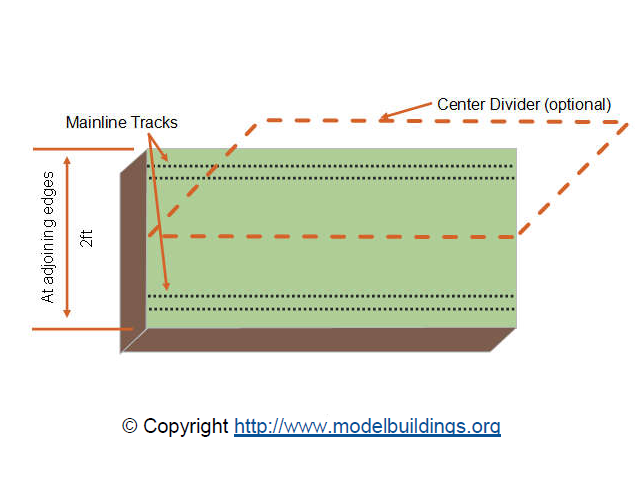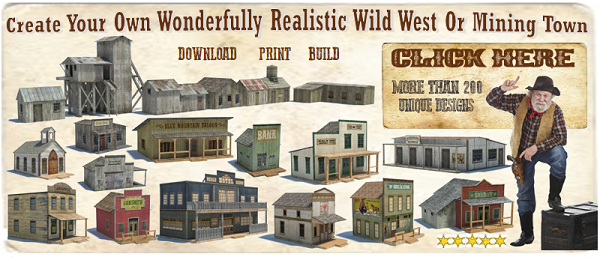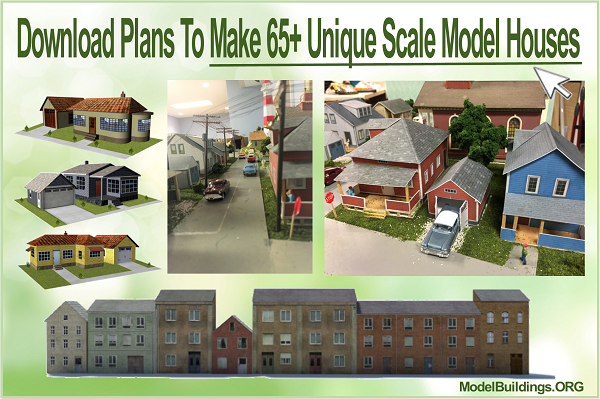A Brief Survey of N-Scale Modular Model Railroading
Beginning model railroaders often think and dream in terms of huge layouts running multiple trains and operating sessions, with plenty of highly detailed scenery. Indeed, that dream is one of the things that sustains us in the hobby over the decades..
© Copyright http://www.modelbuildings.org All rights reserved.
Life has a bit more reality in store for most of us. Job situations, the growth of our families, personal crises and triumph frequently curtail our wildest fantasies. In fact, some plans get scaled back into inactivity in the hobby until situations again permit our layouts to proceed.
Modular railroading is one aspect of our hobby that offers some incentive to return to our creative bent with the added bonus of demonstrating progress towards that massive rail empire you crave! Modules are easy to build, singly much less expensive than a huge layout, and have the advantage of being standardized so that others so inclined can come together and create large layouts by linking modules together. When the gathering is complete, the module(s) can be disassembled and returned to convenient storage.
Take a tour of a nearby industrial area and bring your camera or smart phone. Take lots of photographs, then go through your kitchen and garage and look for small bits that look like the objects in your photos. Look for the shape rather than the color, you can always paint to suit.
Be sure to glue your trash down, though. Otherwise you might end up with model trash being real trash on the layout room floor!
Using Paints and Washes To Create Scenery Realism
Paints useful to model railroaders come in five basic types: Enamel, Acrylic, Lacquer, Polycarbonate and Latex. The easiest paints to work with are Acrylics and Latex because they are water soluble and clean up easily leaving very little mess. The more familiar model paints for rolling stock and plastic items are Enamels and Lacquers and require a special thinner product to clean up and remove spills. Polycarbonates are usually found in the form of spray cans or airbrush products and sometimes need surface preparation besides cleaning to adhere well.
Washes are made from paint plus whatever thinner is appropriate to the paint type. Washes can be of nearly any proportion, but 4:1 or 5:1 thinner to paint is typical. A rule of thumb is that the thinner the wash, the easier it is to control the effect. It’s best to use several very thin coats of wash than one thicker coat.
N-Trak
One of the very first attempts to standardize modular modeling is the N-Track design. There is a national society of N-Trak builders, whose web site can be found below: N-Trak has been around since the early 1970s with few changes to the original design. Most of the changes have to do with adaptations to support more common electrical interfacing and the use of Digital Command and Control on the larger club and train show layout assemblies. However, the original 2 foot by 4, 6 or 8 foot by 40-inch-high physical size construction have remained unchanged. There is a lot of flexibility built into the standard, but the physical size of the standard modules, plus a 3 foot or 4-foot corner module design must be adhered to so that the modules will fit together seamlessly for good operation. A digital or print copy of the entire standard and suggested or required construction practices is available on the excellent NTrak.org web site
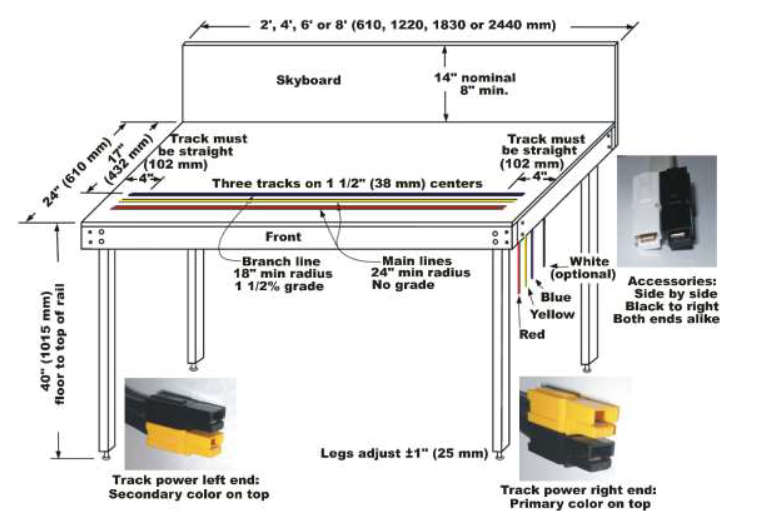
One-Trak
One-Trak is an offshoot of the N-Trak standard using the same physical size modules and same electrical wiring arrangements. While the N-Trak modules are based on a two main line and one branch line track arrangement, One-Track concentrates on a single branch line track per module. Also, One-Trak allows a one-foot long module to be included. Corner modules have the same arrangement as N-Trak. This standard allows N-Trak and One-Trak modules to be mixed on a large display layout. It is up to the builder to ensure that the locations where the two types of modules adjoin adhere to the stricter N-Track standard for track spacing and alignment across the joint.
https://ntrak.org/resources/Documents/oNeTRAK_Manual.pdf
T-Trak
T-Trak is a very simple modular system based on the use of Kato sectional Unitrak. Rather than the linear scenic arrangement found in most N-Trak and One-Trak modules, the focus of a T-Trak module is a small diorama, or rather, a series of small dioramas with common interfacing at the track and electrical joints. Modules must be between 2.75 and 4 inches high and 12 1/8 inch long. The front track must be located 1 ½ inches from the facia side of the module to the plastic ballast molded onto the track section. The standard allows for single, double, triple and quad length modules (up to 4 feet long) and may include track from other manufacturers.
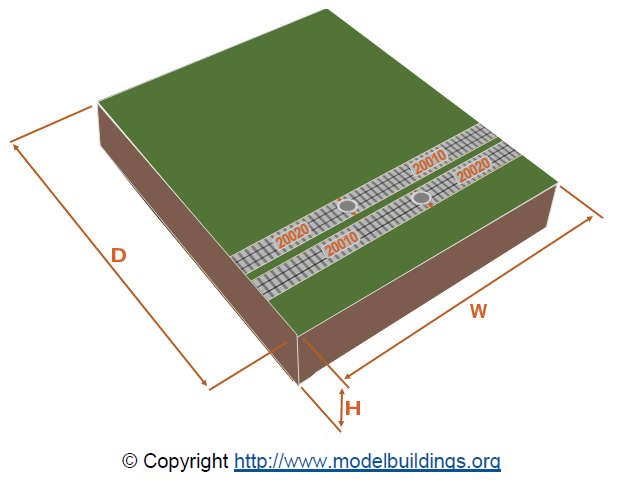
However, the mating sections between T-Trak modules must use Kato Unitrack in the arrangement shown in the figure.
Making the modules so small makes construction at the kitchen table or a small portable work bench very easy to do and easy to clean up as well! https://www.ntrak.org/T-TRAK-Standards
Modutrak
Modutrak is somewhat unique in our discussion of modular N-scale techniques. Rather than being an entirely physical set of standards, it encompasses a build philosophy as well. If you spend any time at all at train shows that feature modular layouts, you will soon notice that the scenery tends to be somewhat erratic. Each module is constructed according to the builders’ tastes and skills, so there is little continuity between modules except in the case where several modules from a single builder may be strung together. Modutrak focuses on rectifying this shortcoming by requiring agreement on the time period, physical location, and road name emphasis by all module builders of a group. For example, the focus might be on logging operations in the California Sierra Nevada Mountains in 1910-1920. Thus, all scenery would depict logging scenes and feature locomotives and rolling stock appropriate to that steam era. One builder might create several modules depicting a sawmill scene. Another might build adjoining modules depicting a cut-lumber loading yard, or a logging town scene. In fact, the philosophy goes farther by encouraging the common use of specific scenic products such as Woodland Scenics. Techniques at the top of the list might include insistence on all hand-laid rail.https:// www.modutrak.com/about/
Free-MoN
There are some modelers who wish to create a somewhat higher standard of modeling than might be found in any of the standards summarized above. Rather than running trains in a circle over module collection that is “child-height”, it uses a more realistic adult viewing perspective of 50”. This places scenery and trains at more nearly eye-level, enhancing the realism and appreciation of enhanced accuracy modeling techniques. These techniques include the use of code 55 rail and turnout radii of no less than #6 with 22-inch radius minimum curves. At the same time, the other modular construction techniques such as end -plate interfacing and DCC capable wiring are incorporated. http://sv-free-mon.org/documents/FreeMoNX2011W.pdf
BendTrak
Finally, there is BendTrak. It is basically the same physical standard as N-Trak with the differences of including an optional center divider and a second set of mainline tracks behind it. An additional “balloon module” services a turn around function rather than requiring several partial curve modules which take up considerable space. In fact, a small complete layout can be created simply by joining two balloon modules end to end. http://bendtrack.com/Bend%20Track%20Manual.pdf
